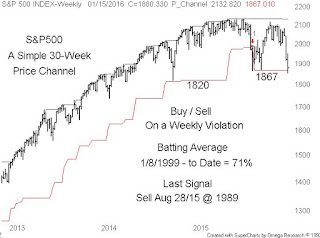I see a press release that on January 27, 2016
(TORONTO) – TMX Group (TMX) and S&P Dow Jones Indices (S&P DJI) today
announced a renewal of the multi-year Index Operation and License Agreement
(Agreement) between TSX Inc. and S&P DJI, further extending their
long-standing and successful partnership. The Agreement will ensure that market
participants will continue to have access to a comprehensive suite of
investable indices for the Canadian equity markets, as well as North American
and global markets.
One of those indices is the Canadian benchmark S&P/TSX
60 Index which according to the TSX - is designed to represent leading
companies in leading industries. So how come a penny stock, Bombardier Inc. BBD.b
with a puny weight at 0.16% is still in the index? Why not rename the index to the S&P/TSX59?
Bombardier Inc. is also a component of the
S&P/TSX Industrial Index – the other S&P/TSX 60 industrial peers are Canadian
National Railway Company, Canadian Pacific Railway Ltd and SNC Lavalin Inc. I
suggest that it would be prudent to replace Bombardier Inc. with another industrial sector issuer.
– just to keep the S&P/TSX 60 Index balanced. Why not consider CAE Inc., MacDonald
Dettwiler and Associates Ltd , Stantec
Inc.or WSP Global Inc. Please no more consumer,
energy or financial names.
Our chart – is a long term monthly weekly of CAE with
a cycle overlay and relative performance study and at 500K + trades per day is
a liquid aerospace play.







